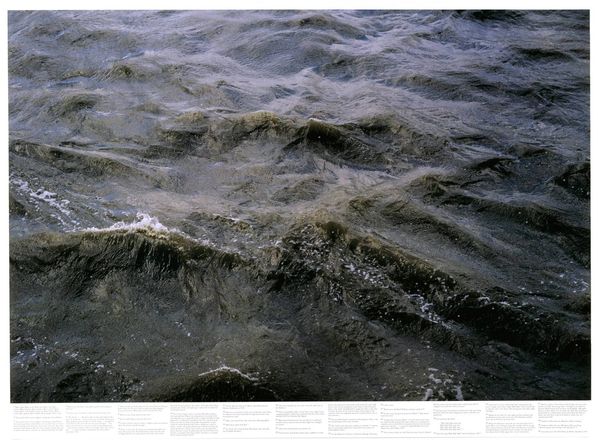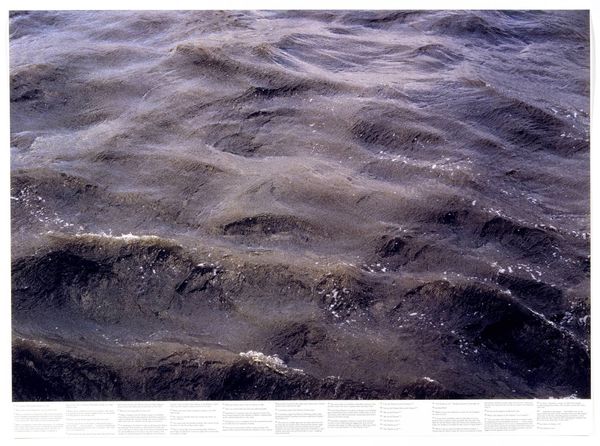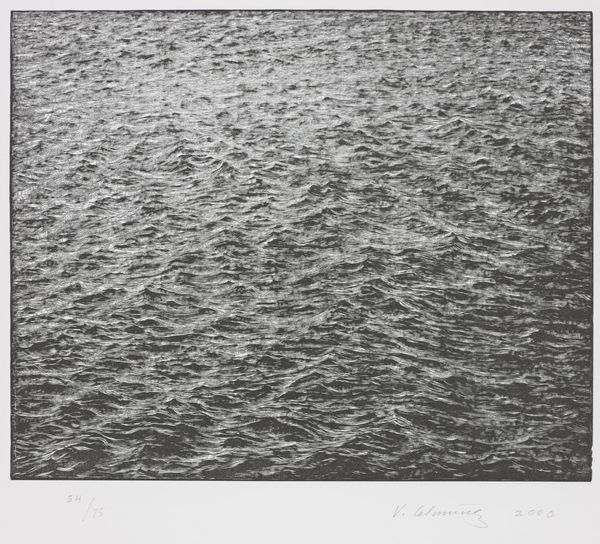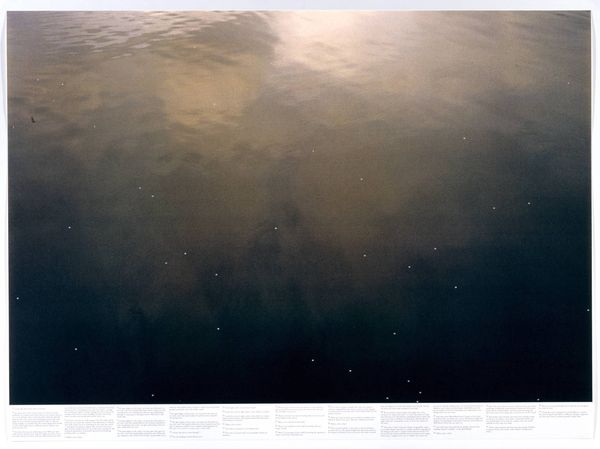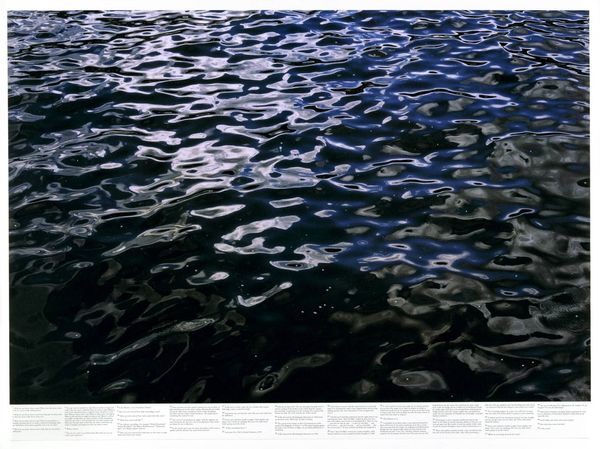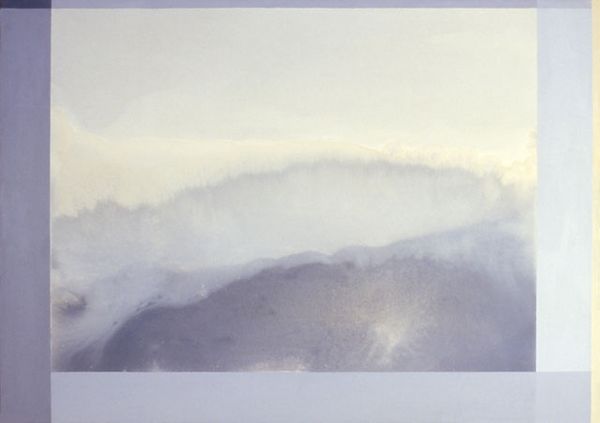
Copyright: Roni Horn,Fair Use
Editor: Here we have Roni Horn’s photographic print, "Untitled (from the series Still Water (The River Thames, for Example))" made in 1999. There is such a constant state of flux in the water; you see ripples and waves on the surface of what seems like a murky body of water. How should we interpret such a deliberate capture of this body? Curator: This work invites us to consider the Thames not just as a geographical feature but as a cultural entity, deeply interwoven with London’s history and identity. Consider the role rivers play in urban development, how they serve as both a resource and a boundary, a source of life and a conduit for waste. In what ways do you see that history reflected? Editor: Well, you could say there is this constant push and pull, right? Resource versus waste as you say; it all comes back down to control and accessibility, maybe? Is Roni Horn's repetitive photography style emphasizing the sameness, or is it meant to suggest the always shifting nature of how society engages with such an old environment? Curator: Exactly! It's the tension between the perceived stability and the actual flux that's critical here. If you think about contemporary debates around water rights, pollution, and access, it highlights how these supposedly "natural" spaces are in fact deeply contested and regulated. Does the apparent neutrality of the photograph, its objective representation, perhaps obscure those power dynamics at play? Editor: That is quite the paradox! By not taking a direct stand, Roni Horn is in fact opening a Pandora’s box for us to really examine our relationships to the waterways around us, both historically and contemporarily. Thank you. Curator: And thank you! It seems both our understandings of what appears stagnant actually have an awful lot to say!
Comments
No comments
Be the first to comment and join the conversation on the ultimate creative platform.
